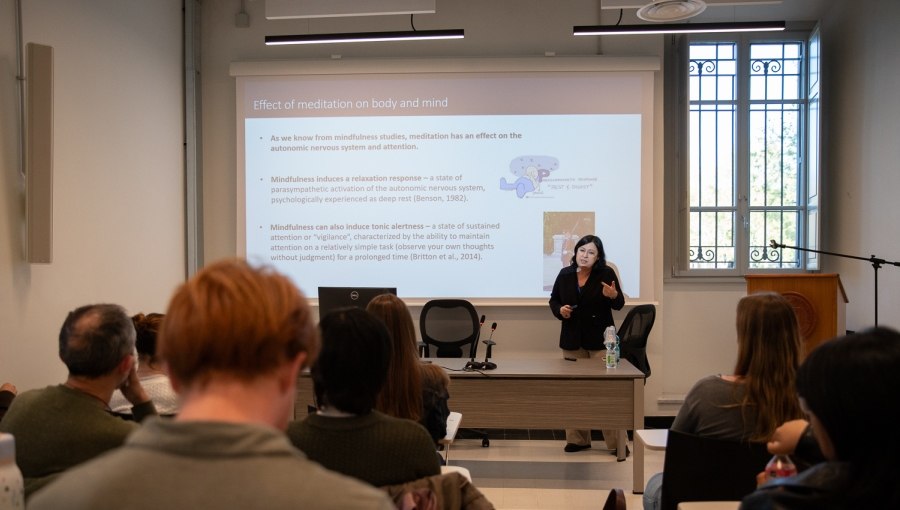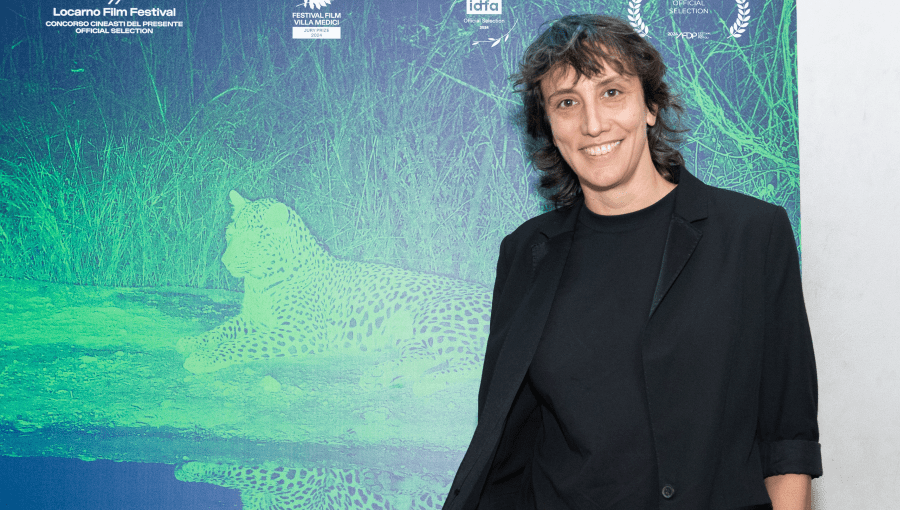Decoding Human Communication: Professor Bruno Galantucci
Originally from Milan, psychology professor Bruno Galantucci holds a Dottorato di Ricerca from the University of Padova and a Ph.D. from the University of Connecticut. Professor Galantucci’s area of expertise is human communication as well as the new scientific discipline called Experimental Semiotics, which he contributed to developing.

Professor Bruno Galantucci
What brought you to JCU?
After living in the United States for 20 years, I had a sabbatical in Barcelona and that reconnected me with the Mediterranean lifestyle, sparking the desire to come back to Europe. Soon after that, I saw that there was an American university in Italy looking for a psychology professor and I thought that JCU was an ideal environment for me. I like its mission very much and I think that Italy really needs more of the global perspective that JCU brings. I also like the fact that there are students from all over the world who get exposed to cultures other than their own.
How do you find teaching at JCU?
It required some adjustment at first because I was used to teaching exclusively to psychology majors. Teaching to a much broader variety of students challenged me to come up with new ways to explain the basic concepts of psychology. In my General Psychology course, for example, I have many students with no background in psychology and sometimes I must teach them the psychology of perception, or parts of the nervous system, which they have probably never heard of before. It has been a lot of fun to find ways to explain these things to the students; it requires creative teaching techniques, a careful choice of contents, and a bit of theatrics.
Can you give us an example of a challenge that you encountered? How do you explain something to students who have no idea?
The first challenge was to tailor the contents for different audiences and to bring more life into them. I began to use more and more examples from daily life, and make them come alive in the classroom. For instance, I explain the complicated concepts of the ecological approach to perception — which boil down to the idea that perception evolved for guiding action — through the example of beautiful birds called the Diving Gannets. These birds hunt fish by diving headfirst into the ocean from a height of about 100 feet. During the dive, they have to keep their wings open to maintain direction, but their bones are very fragile and, if they were to make impact with the water with open wings at the speed of a dive, they would break their bones. What they use to know when to fold their wings at just the right time is a simple perceptual property that we call the rate of optical expansion, the specific “visual explosion” that occurs when we are about to make contact with an object. In this way, perception directly guides the action of the Diving Gannets. Examples such as this one not only intrigue the students by revealing the complex mechanisms that are behind simple real-life acts but they also help them to better understand difficult concepts.
The other challenge was that students often would not talk in the classroom so I had to find a way to overcome that, which has also been quite fun to do. In particular, I created an open and relaxed space where students can laugh and feel comfortable, even when they make mistakes. Indeed, I started making mistakes myself, on purpose, and then I laughed about them to show the students that it is ok.
As a scientist, you contributed to founding the field of Experimental Semiotics. Tell us more about this study.
Experimental Semiotics looks at the birth of a semiotics system, studying how humans create and use novel signs. The inspiration for this line of research came from a natural experiment that happened in a school in Nicaragua, which was the first school for deaf children in the country. About 200 deaf students, aged 6 to 16, were put in the same school and, in a matter of two years, they invented a new language that was as complex as any other. I wanted to study how this process of language invention works and I wanted to do that in the lab. This led to one of the first studies in Experimental Semiotics, in 2005.
I studied how people invent a language from scratch. In particular, I had people coming into my lab, where we created a virtual environment, essentially an online video game that people played in pairs. They had to coordinate their moves because they were playing as a team. In order to coordinate, they had to communicate, but they had no means to do so except for a special digital channel over which they could only draw dots, lines, and squiggles. In this way, we observed many pairs that succeeded in the game by creating new languages composed of various forms of dots, lines, and squiggles. This study led to the birth of a new discipline, now called Experimental Semiotics, and for ten years that was the main focus of my research.
Of the various experiments that you have carried out, which one surprised you the most? What was the most unexpected finding?
An unexpected finding of the 2005 study was that there were people who completely failed at inventing any communication system, even after many hours of trying. A few years later, a colleague of mine helped me understand that I actually had a big treasure of data, because “all those failures are telling you what doesn’t work.” So we went back and re-analyzed all the records we had. These records, unlike natural situations such as the Nicaraguan school, were abundant and detailed. What we discovered was that some people have communication limitations that they are not aware of. Interestingly, none of these people had any apparent communication problems in daily life. In other words, we seemed to have stumbled upon a very sensitive measure of communication abilities that revealed to us that there might be people who have communication deficits that are subtler than the ones we usually diagnose as autism or Asperger syndrome. When I became aware of this, I started studying people involved in ordinary conversations and documenting the extent to which they miscommunicate, or fail at communicating altogether. The findings were again quite surprising: people are accustomed to miscommunicating and often when they become aware of this, they just move on without trying to remedy the problem. This phenomenon had not been studied very much, and that has become the main focus of my research over the last few years.
What’s the one main thing that you hope students get out of your courses?
That it’s fun to study, to be curious and to learn about something that you don’t know about. It is not just something that you do to get a degree or a job. Learning is a wonderful activity and I try to make students feel personally invested in what they learn. That entails showing them that education is not just a commodity, something that they buy and then resell for a higher price, by getting a well-paid job. Education is also about opening your mind, making you curious, and it can give you the tools to pursue a more interesting and meaningful life.





